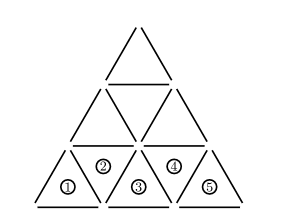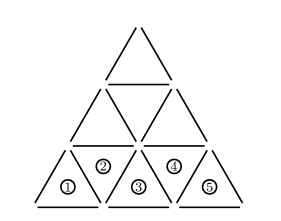Try this beautiful problem from Pattern based on Triangle.
A large equilateral triangle is constructed by using toothpicks to create rows of small equilateral triangles. For example, in the figure, we have \(3\) rows of small congruent equilateral triangles, with \(5\) small triangles in the base row. How many toothpicks would be needed to construct a large equilateral triangle if the base row of the triangle consists of $2003$ small equilateral triangles?

Pattern
Sequence
Symmetry
Answer: \(1507509\)
AMC-10A (2003) Problem 23
Pre College Mathematics

If we observe very carefully,we notice that
1st row the number of toothpicks needs a triangle is 3 i.e \(1 \times 3\)
2nd row the number of toothpicks needs a triangle is 9 i.e \( 3 \times 3\)
3rd row the number of toothpicks needs a triangle is \(18\) i.e \(6 \times 3\)
Can you now finish the problem ..........

we also observe that in the 1st row the number of triangle is 1. In the 2nd row the number of triangle is 3.In the third row the number of triangles are 5.so toothpicks is the corresponding triangular number. Since the triangle in question has \(2n-1=2003\) \(\Rightarrow n=1002\) rows.
can you finish the problem........
So number of triangle required =\(\frac{n(n+1)}{2}\)=\(\frac{(1002 )(1003)}{2}\).There are 3 toothpicks needed to form a Triangle.
Therefore required numbers of toothpicks=\( 3 \times \frac{(1002 )(1003)}{2}\)=\(1507509\)